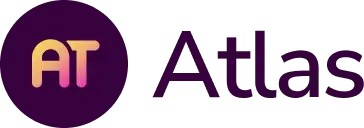Written by Marie Mugabe, FariaPD
If you are like most schools around the world, you have likely spent the last few months scrambling to adjust your typical, in-person classes to a remote learning environment. You have spent countless hours adjusting units and curriculum writing to meet the needs of your students as they transition to a whole new way of learning. As the school year comes to a close for many, and the season of master schedules and planning are well underway, schools have the opportunity to move from reactive to proactive by pausing, reflecting and preparing.
Although no one can fully say what the 2020-2021 academic year may hold, we know there will be gaps. We know there will need to be curricular adjustments. We know essential learning components may have been missed...so for many schools the million dollar question is: How can we adjust our curriculum to ensure continuity of learning for all students and that essential grade level expectations are met?
There are some important curricular steps that schools can start doing now, in order to respond to this question and be prepared for next year.
Step 1: Capture the Changes
Before we can look to next year, we must reflect on the learning that did or did not occur this year. With the sudden adjustments in the learning environment, many schools chose to focus on essential learning targets and condense units in order to accommodate remote learning. Now is the time to ensure that all of those unit changes are clearly captured. Teachers should spend time reviewing what was covered during remote instruction, and clearly articulate the changes that occurred. In doing this, they can identify the essential learning targets that may have been missed and clarify what will need to be addressed the following year.
[one_half]
- Atlas Tip: Use standards flagging to identify the standards addressed in a unit during remote instruction.
- Atlas Tip: Use text color or highlighting to show areas addressed during remote instruction.
[/one_half]
[one_half_last]
- AtlasNext Tip: Bold the areas that were addressed during remote instruction. Use the Reflections feature to note focus areas for the unit.

- AtlasNext Tip: Create a folder in Streams & Resources that contains essential components and resources for content that was not addressed during remote instruction.
[/one_half_last]
Step 2: Identify the Gaps
Once teachers have clearly documented the changes that occured, the next step is to begin the process of identifying the gaps in student learning. When using a curriculum management platform, such as Atlas, this work can easily be done through pulling unit reports and comparing units side by side to show what was covered and what may have been missed. In AtlasNext, you can share units or use the School-Wide Curriculum view to compare units.
[one_half]
Atlas Tip: Use the Comparative Unit Calendar to look at units side by side, to identify areas that were not addressed during remote instruction.
[/one_half]
[one_half_last]
AtlasNext Tip: Use Focus Area Analytics to see which focus areas were not addressed in depth in the prior grade level.
[/one_half_last]
Step 3: Prioritize the Essential
We know there may have been multiple learning targets or standards that were not fully addressed in remote learning. However, we also know that to expect the following grade level to cover all of the missed learning targets, on top of their regular grade level learning targets, is unrealistic. This is why determining the most essential of the essential is key. Out of the learning targets that were skipped or not adequately addressed during remote learning, teachers should determine the non-negotiable essential targets. Some questions to consider during this process may include:
- What targets are clear building blocks for the next year’s content?
- What targets continue to spiral in future grade-levels?
- What targets may be already addressed in next year’s course?
- What targets should students have mastered in this grade-level?
- What targets capture essential skills that students will need to be successful in future academic courses?
Knowing that not all targets can be addressed the following year, each grade level should determine 3-5 most essential targets.
Step 4: Think Vertically
Once grade levels have determined their essential targets or standards that were missed, it is time to have teams come together for a vertical review and discussion. These teams can explain how students are typically expected to meet the target and brainstorm how the targets can be integrated into next year’s course. The integration may look different for each grade level or unit. Some options may include:
- Create a new unit that specifically addresses the missed essential targets from the prior year.
- Copy a unit from the year prior into next year’s course.
- Provide intentional scaffolding in units to support specific targets and gaps in learning.
- Identify where specific learning targets spiral from year-to-year and determine where to provide more in-depth coverage.
Depending on the grade level, content area and specific course, your school may choose to do a combination of the above to ensure adequate coverage for all essential learning targets.
[one_half]
Atlas Tip: Use the color coding feature in the unit calendar to clearly mark unit changes made to the course for the 20/21 school year.
[/one_half]
[one_half_last]
AtlasNext Tip: Create clear unit titles to show changes to your course for the 20/21 academic year. Use the unit overview feature to show key components of the added unit.
[/one_half_last]
Step 5: Edit and Revise
Now it is time for teachers to sit down with their units for next year and make the necessary updates to ensure gaps are covered. This may mean making adjustments to standards, learning targets, and content and skills. As the new learning goals are clearly defined, teachers will need to create or adjust assessments and learning activities to ensure alignment and coverage. If your school is using a curriculum management software, such as Atlas or AtlasNext, this process can be streamlined by sharing units and pulling resources from other courses.
[one_half]
Atlas Tip: Use the copy a unit feature to copy a complete unit from one course to another.
[/one_half]
[one_half_last]
AtlasNext Tip: Use the add resources feature to pull in resources from the prior grade level to supplement instruction.
[/one_half_last]
Step 6: Final Review
As teachers update courses, it will be important for curriculum leaders or administrators to review the updates for alignment and consistency. Consider pulling a Standards Analysis report in Atlas, or review your Whole-school Curriculum Analytics in AtlasNext to provide a big-picture perspective of specific grade level courses.
[one_half]
Atlas Tip: Use a Standards Analysis report to see where grade level standards are being targeted.
[/one_half]
[one_half_last]
AtlasNext Tip: Use the Curriculum tab to quickly review unit calendars and look at multiple subjects, side-by-side within a specific grade level.


[/one_half_last]
Step 7: Prepare for the Unknown
Although many schools are hoping to return to in-person classes soon, this may not be the reality for all. As your school spends time developing and adjusting curriculum, prepare for the unknown by creating resources and template categories that can intentionally support remote learning, if necessary. For ideas on what this may look like, check out our blog, How Schools are Using Curriculum in Atlas to Guide Remote Learning.
Even though our units and learning approaches may look a little different this year, our overall mission and goals should remain the same. By taking the time now to pause, reflect, and prepare we can continue to provide our students with a high quality education and prepare them to be the leaders of tomorrow.
Want support in preparing your school’s curriculum for the new academic year? Wonder how this process can be efficiently streamlined within a curriculum management system, such as Atlas or AtlasNext? Let us help! Check out our virtual Professional Development offerings specific to this topic. Not sure where to start? Reach out to [email protected] and we would be happy to discuss next steps for your school.
[box] FariaPD supports teachers and leaders around the world with hands-on, active and creative professional development experiences. Join one of our online or in-person professional development events, each designed to support the unique goals of your school or district. FariaPD is part of Faria Education Group, an international education company that provides services and systems for schools around the world including ManageBac, a learning platform for IB schools; OpenApply, online admissions management; SchoolsBuddy, for Activities Management, Payments and More; and AtlasNext, a tailored curriculum-first learning platform for independent and international schools. [/box]
Through her diverse experience with education in the United States and abroad, Marie has seen how quality education can unlock the doors of opportunity. Her educational career stemmed from a passion for international development which led to her many roles in education, including: classroom teacher, ELD specialist, program director, curriculum developer and university professor. In her current role, as a Professional Development Facilitator, Marie consults with schools internationally and domestically supporting teachers and administrators in curriculum development and educational practice. Her lens of diversity allows her to find new ways to leverage students’ assets in the classroom, and ensure that all students have access to authentic and rigorous curriculum. Marie earned her Bachelor’s degree in Criminal Justice and Psychology from Loyola University in Chicago and her Educational Master’s degree from George Fox University in Portland, where she is now an adjunct professor for the School of Education.












